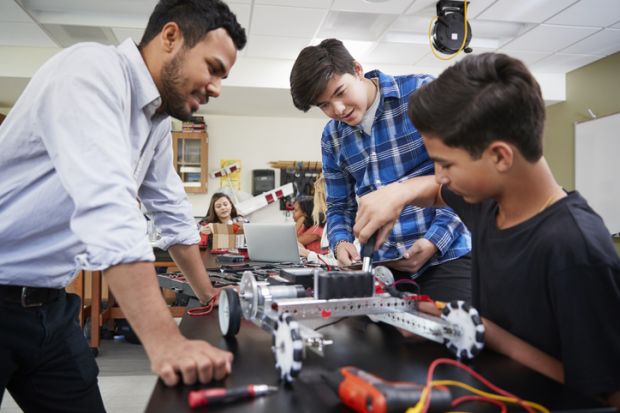US education schools have fulfilled a 2011 Obama administration promise to train 100,000 new science and engineering teachers within a decade, through improvements in recruiting and workplace integration.
Ten years after Barack Obama made the commitment, the US has added more than 108,000 school teachers in science and technical fields, according to 100Kin10, a coalition of universities and other public and private partners created to implement the governmental pledge.
Data from participating institutions suggest that they managed an average increase of more than 70 per cent over the past decade in the production of teachers in the science, technology, engineering and mathematics fields, the group said.
The gains reflected a range of strategies, said the coalition’s founder and executive director, Talia Milgrom-Elcott, including new evidence-based approaches to teacher preparation that stress real-world practice and coaching, and expanded outreach to recruits emphasising both salaries and sense of mission.
“Strong undergraduates, even in the competitive STEM fields,” Ms Milgrom-Elcott told Times Higher Education, “can be inspired to teach by speaking to their aspirations to be part of something big and meaningful.”
Leading academic members of the 100Kin10 group include the California State University system, the University System of Maryland, Purdue University and the Dana Center at the University of Texas at Austin. They and other participants – including foundations, companies and government agencies – together raised more than $120 million (£90 million) towards their 10-year goal.
The funding helped projects such as a new teaching residency programme at Rider University that integrates coursework and student-teaching experiences, and an effort by Fort Hays State University in Kansas to improve its teacher certification programmes by studying practices at other US institutions.
Western Governors University found that just the prestige of the nationwide effort helped it to recruit students with scientific and technical backgrounds who were willing to consider applying their talents as teachers, according to an assessment that 100Kin10 commissioned by the policy study group Bellwether Education Partners.
The outcomes reflected an attitude of “radical collaboration” created by the presidential goal, Ms Milgrom-Elcott said. The 100,000 target seemed “ambitious but achievable” at the moment of the 2011 announcement, said Arne Duncan, the US secretary of education at the time.
Both Ms Milgrom-Elcott and Mr Duncan acknowledged the need to overcome some historical tensions between schools and teachers unions. But “the only real competition here”, Mr Duncan told a briefing arranged by 100Kin10, “is with other countries that are taking this much more seriously than us”.
Having accomplished its founding purpose, the 100Kin10 group is now looking to set new goals, Ms Milgrom-Elcott said. One clear need, she said, is to help the new science and technology teachers feel like they belong so they remain in those jobs. “The challenge is there in front of us still,” she said.

